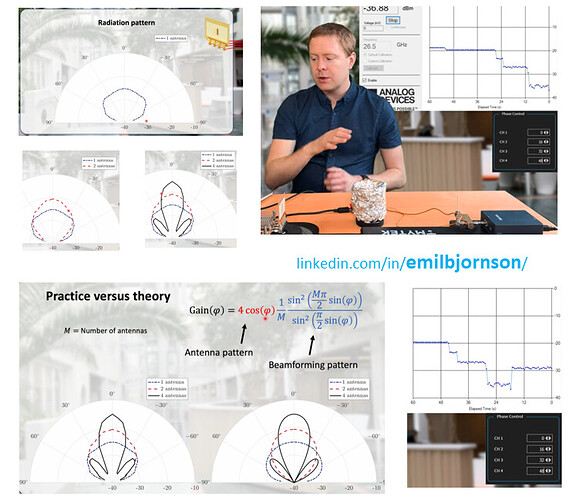The focused transmission from an antenna array takes the shape of a beam.
The beamwidth depends on the number of antennas and choice of antenna. In the fifth video of this series, Prof. Emil Björnson measures the radiation/beam pattern of an array with a varying number of antennas.
The results are used to measure the beamwidth and identify side-lobes, and are compared with theoretical formulas.
Beamforming is used in all 5G systems, both in sub-6 GHz and mmWave bands.
The video ends with a demonstration of how antenna arrays can be used for radar sensing, which is one of the new prospective 6G features.
Credits: ![]()
YouTube: ![]() Beamwidth, beam pattern, and sensing [Part 5, Fundamentals of mmWave communication] - YouTube
Beamwidth, beam pattern, and sensing [Part 5, Fundamentals of mmWave communication] - YouTube
